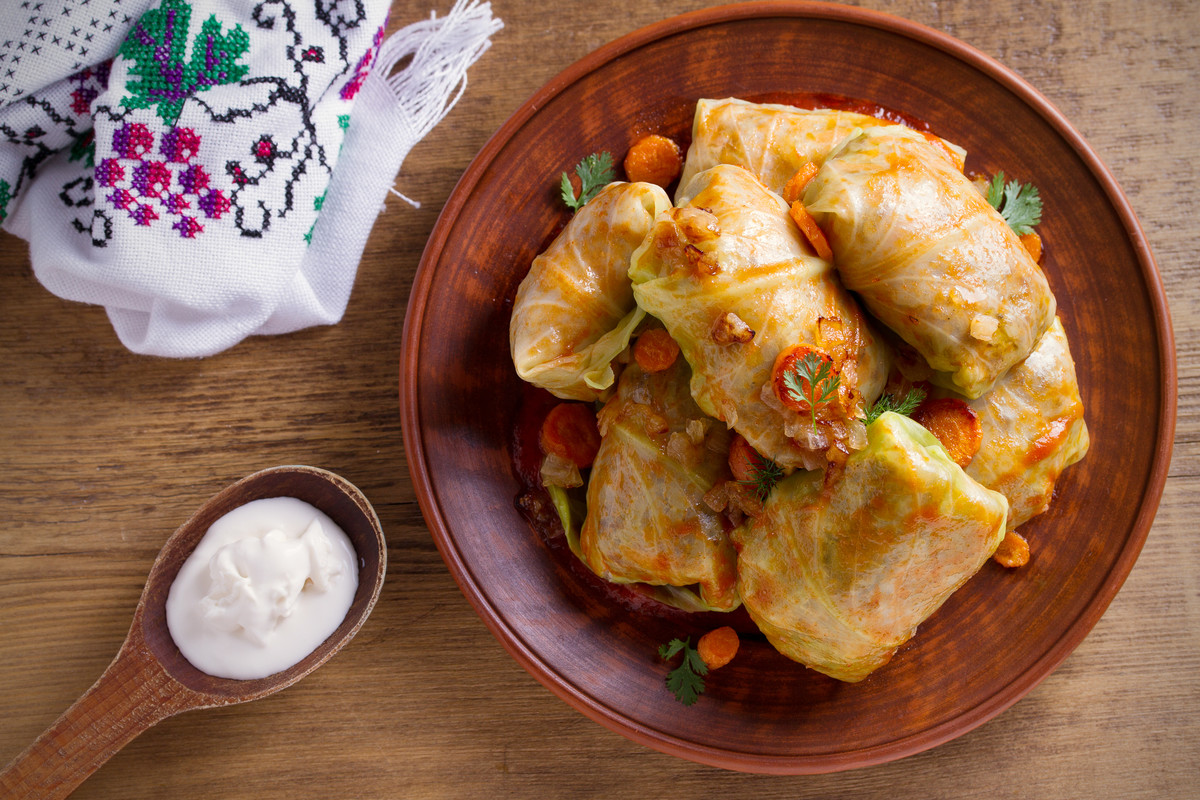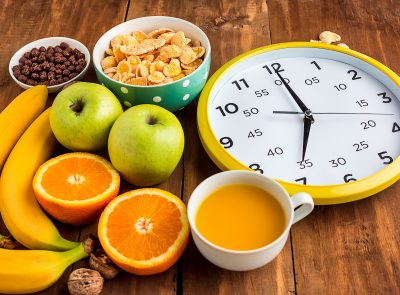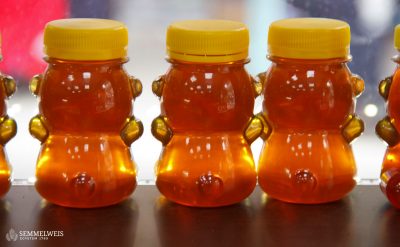Hungarians traditionally have a very different Christmas menu from the British tradition of roast turkey and pigs in blankets. The most popular dishes over the festivities are fish soup with carp, some types of poppy seed dessert called beigli or mákos guba, stuffed cabbage usually made with sauerkraut and lentil stew called lencsefőzelék.
“Hungarian cuisine is usually regarded as quite heavy with lots of meat, fat and paprika, however, at Christmas and New Year, we have a somewhat different diet. Although we usually can’t escape overeating, we have slightly healthier options such as fish and vegetables on our festive menus” – says Adrienn Szabó, a dietitian at the Department of Surgery, Transplantation and Gastroenterology, and also an award-winning cookbook author.
Fish and soup a’la fisherman style
 In Hungary, fish is the main celebratory meal served on Christmas Eve. The roots of this tradition are from the Catholic fasting period leading up to Christmas when eating meat is not allowed.
In Hungary, fish is the main celebratory meal served on Christmas Eve. The roots of this tradition are from the Catholic fasting period leading up to Christmas when eating meat is not allowed.
Each household has its own twist on fish soup. Still, traditionally the method is divided between the river Tisza and Duna – the two main Hungarian rivers.
Along the Tisza, in and around Szeged, this dish is prepared by making a stock first from fish bones and pieces, and then pressing the whole pieces through a sieve in the end – so only a thick liquid base remains.
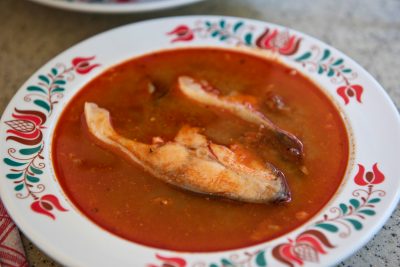 Along the Danube, near Baja, it’s a simple fisherman-style soup – cooking the fish in pieces with onion and eating it as it is, adding match-shaped noodles when serving. The tradition comes from when fishermen were making their lunch on an open fire in a big iron pot at the end of their working day.
Along the Danube, near Baja, it’s a simple fisherman-style soup – cooking the fish in pieces with onion and eating it as it is, adding match-shaped noodles when serving. The tradition comes from when fishermen were making their lunch on an open fire in a big iron pot at the end of their working day.
“In Hungary, there is no stigma around eating carp, and it’s consumed for luck which of course is only a belief. What is real though is that it has lots of health benefits, mainly it contains plenty of Omega 3 which has anti-inflammatory effects and is protective against cardiovascular diseases” – explains Adrienn Szabó.
Sea fish or salmon is even richer in Omega 3, and you can easily cook your version with them if you can’t buy carp.
Poppy seed bread pudding (mákos guba)
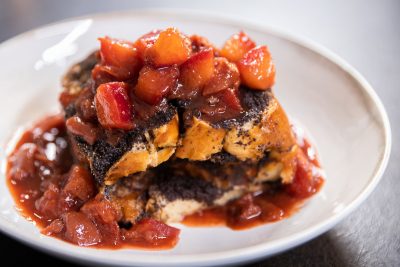 Hungarians eat poppy seeds all the time. At Christmas, a rolled dough (beigli) filled with poppy seeds or walnuts is a must on any festive table. However, if you are looking for a quirky dessert, try the poppy seed bread pudding which is delicious and easy to make!
Hungarians eat poppy seeds all the time. At Christmas, a rolled dough (beigli) filled with poppy seeds or walnuts is a must on any festive table. However, if you are looking for a quirky dessert, try the poppy seed bread pudding which is delicious and easy to make!
“Mákos guba is a real cosy food and it’s one which you can justify eating because of the poppy seeds’ many health benefits! Very high in fibre so it helps with digestion and to get rid of harmful free radicals (by vitamin E for example). It is also rich in anti-inflammatory Omega 6” – says Adrienn Szabó.
She adds:
Poppy seed contains lignans (a type of phytoestrogen) which according to some studies may increase libido and improve sexual health, especially in the post-menopausal period.
Mákos guba is one of the oldest Hungarian recipes, its first mention appeared to be in the first Hungarian printed cookbook 300 years ago. Nowadays it is made of dry crescent rolls but it’s easy to replicate with any leftover bread, cake or even bagel.
New Year lentil-stew (lencsefőzelék)
One of the most peculiar Hungarian New Year’s Day traditions is eating lentils. The most often cooked dish is főzelék, a one-bowl hearty dish. Its consistency is like dhal or stew.
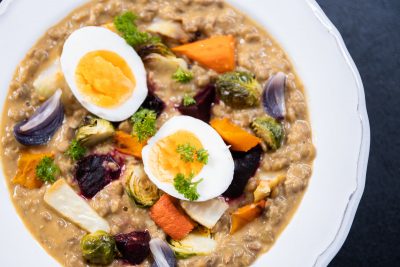 According to superstition what you do on the first day of the year will determine the next 365 days. Therefore, you shouldn’t do housework such as cleaning or taking out the rubbish because it can bring bad fortune.
According to superstition what you do on the first day of the year will determine the next 365 days. Therefore, you shouldn’t do housework such as cleaning or taking out the rubbish because it can bring bad fortune.
Fish is replaced by pork on the New Year table as fish can swim away with your luck – while a pig can dig it out for you. Likewise, lentil symbolises wealth – the more lentils you eat, the more money you will have.
“Lentil is also very good for us. It has a high content of phytonutrients which protects us against chronic diseases such as obesity, diabetes or heart problems. Amongst other things, lentil is a source of plant protein and phytosterol which has a preventative effect against breast cancer. Plus, it is rich in prebiotic fibre which helps with the digestive system.”
Tradition says you need to eat lentils at midnight and as the first meal of the New Year. Good luck and Happy New Year!
Food upcycling tips for leftovers:
- Make a good pâté from any cooked or fried fish which proved to be too much on Christmas Eve. A light dinner on toast!
- Any turkey could go towards a nice stuffed cabbage with a twist – in Hungary we use pork but why not try it with turkey instead?
- For extra flavour use any Christmas cake leftover to prepare the poppy seed bread pudding (mákos guba).
- The extra roast vegetables could be a good base for a quiche – or an added highlight in a lentil stew.
Poppy seed bread pudding recipe:
600g stale bread, cake, brioche (any leftover will do)
500ml milk
2 egg yolks
40g butter
100g poppy seeds (whole or ground)
60g sugar
4 tbsp honey
lemon zest of 1 unwaxed lemon
1 pinch of cinnamon and cloves
Poppy seeds should always be ground immediately before use because they go rancid quickly. A specially designed coffee grinder or a powerful food processor is suitable for grinding.
Grease a baking tray and preheat the oven to 180 degrees. Cut up the bread you use. Put the butter, milk and honey in a pot and boil. Mix the egg with half of the powdered sugar with a whisk until white, then add the hot milk. Place a layer of the bread slices in the baking tray, then pour the egg-milk mixture over it. Then comes a layer of poppy seeds mixed with the sugar, lemon zest and spices. Repeat the layering until the tray is complete, and bake for about 25 minutes. Serve it as it is, with custard, or with any leftover fruit.
Angelika Erdélyi
Photo: Bálint Barta – Semmelweis University; iStock
